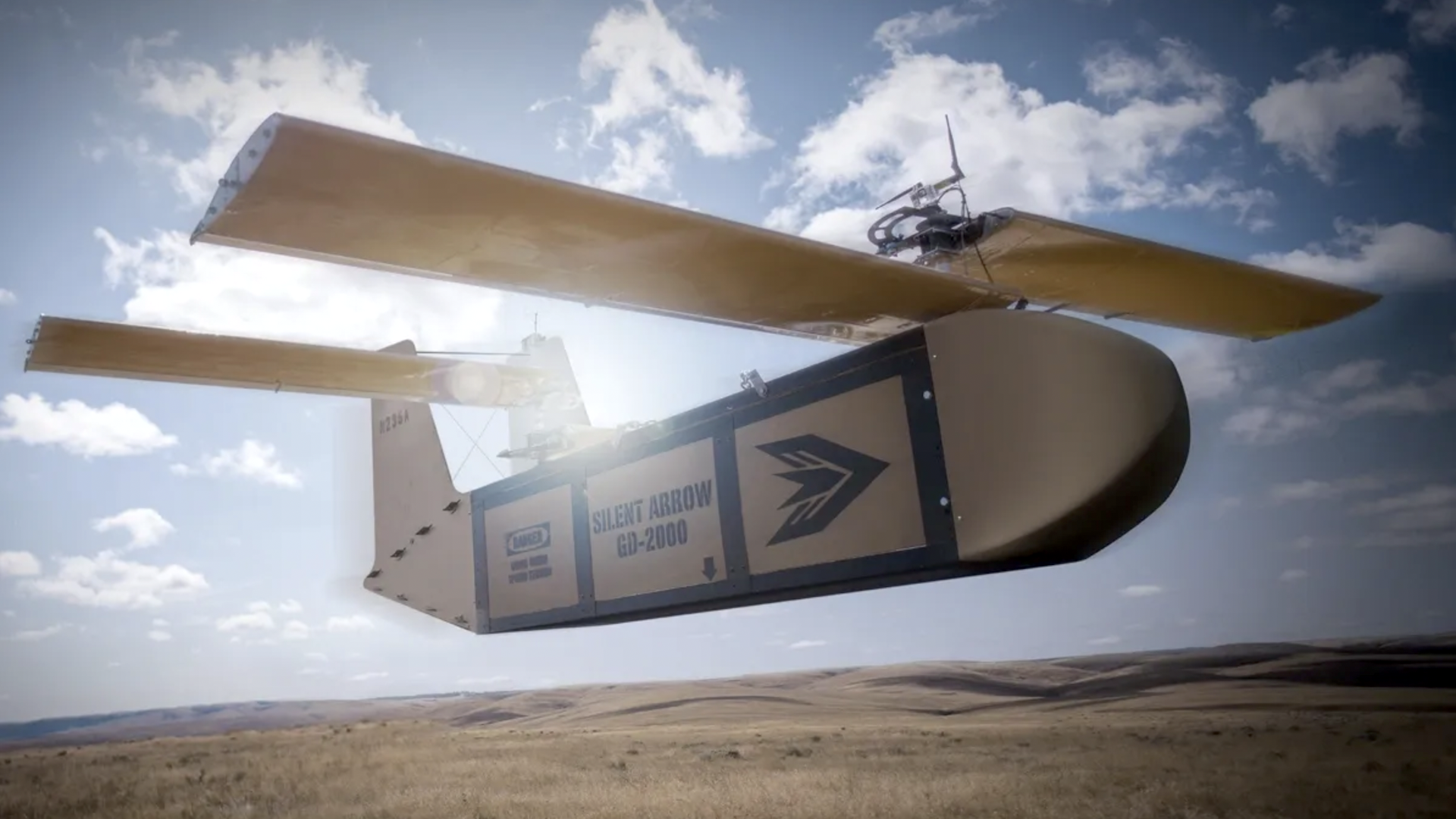

Army Special Forces soldiers have tested a brand new unmanned aerial delivery system to enable the quick resupply of friendly forces in the most contested environments, the service announced on Thursday.
Green Berets from the 1st Special Forces Group (Airborne) successfully tested Defense Department contractor Silent Arrow’s GD-2000 glider, a disposable autonomous aircraft that can haul up to 1,500 pounds of gear and equipment in its coffin-shaped body at ranges of up to 40 miles, at the Yuma Proving Ground in Arizona, according to a 1st SFG(A) press release.
During testing at Yuma this past February, Green Berets deployed a GD-2000 — which, as a tandem-wing glider, flies on four seven-foot spring-launched wings that pop out of the fuselage — with a 1,000-pound payload from an Alenia C-27J Spartan cargo aircraft and landed within 30 meters of its intended target on the range with its cargo completely intact, according to the 1st SFG(A).
Subscribe to Task & Purpose Today. Get the latest military news, entertainment, and gear in your inbox daily.
Billed as “the world’s most dependable standoff resupply platform” by Silent Arrow, the company claims the GD-2000 can handily beat the delivery range of the U.S. military’s parachute-based Joint Precision Airdrop System (JPADS) at half the cost of the latter, operating “through contested spaces with GPS accuracy.”
JPADS “tend to be both larger in size and have limited ability to maneuver through the air, making them less accurate, especially over long distances or in high-wind conditions,” according to 1st SFG(A), adding the GD-2000 glider itself is “completely disposable” once the resupply is complete.

The testing was funded through a $2.2 million award to Silent Arrow through the Pentagon’s Warfighter Lab Incentive Fund (WLIF) as the result of a partnership between the Pentagon-based J7 Joint Force Development Directorate, U.S. Indo-Pacific Command (INDOPACOM), and U.S. Special Operations Command (SOCOM) to develop “a series of advanced operational demonstrations and Concept of Operations (CONOPs) development activities,” as the company announced in February of last year.
As our colleagues at The War Zone pointed out at the time, the WILF contract tasked two GD-2000 drones with executing resupply deliveries during its Emerald Warrior exercise — SOCOM’s largest regular joint special operations drill — at Hurlburt Field in Florida, reflecting a focus on U.S. special operations forces for the potential application of the system.
The involvement of INDOPACOM in the WILF contract reveals the Pentagon’s intentions regarding Silent Arrow’s disposable resupply drones. Indeed, 1st SFG(A) release explicitly points to potential applications for U.S. special operations forces in the Indo-Pacific region, where the Pentagon is increasingly focused on preparing for a future conflict with China.
The GD-2000 would “allow for aerial delivery to remote islands that require a greater level of precision to reliably reach their destination,” according to the release. “With some modifications, the designer of the glider claims it can also land and be recovered in a maritime environment, further enhancing resupply capabilities to the sort of small islands often found in the Indo-Pacific.”

The 2022 WILF contract isn’t the first major engagement between Silent ARrow and the Pentagon. That contract came on the heels of a November 2021 award from the Air Force Research Laboratory to acquire 15 specially-reconfigured GD-2000 systems for a new system “designed for side door and multi-unit (swarm) ramp deployment,” as the company put it at the time.
The 1st SFG(A) testing at Yuma is not the first time the GD-2000 has gone through the wringer. In January 2022, Silent Arrow announced “the Air Force of a U.S-allied government in the Middle East” had successfully conducted the first overseas deployment of the drone under a $1.5 million operational evaluation contract, delivering 1,026 pounds of “undisclosed cargo” in two GD-2000s from a pair of C-130 Hercules transport aircraft.
As Silent Arrow continues to refine the GD-2000 for military customers, the U.S. military appears to be moving full steam ahead when it comes to the concept — and apparently, the recent testing at Yuma made an impression with the Green Berets.
“[The glider] gives us the ability to drop this from a plane outside of controlled airspace into international air space and fly resupply in from an unmanned autonomous craft,” one Special Forces detachment commander said in the 1st SFG(A) release. “It’s a huge enhancement to the mission.”
The latest on Task & Purpose
- No, the VA isn’t going to reduce your disability payments if you make too much money
- Air Force 1-star general relieved for ‘shortfalls’ in personal conduct
- What are America’s goals in Ukraine? It’s not totally clear
- Russia is dusting off ancient tanks as losses mount in Ukraine
- How the Battle of Nasiriyah foreshadowed the long slog of the Iraq War